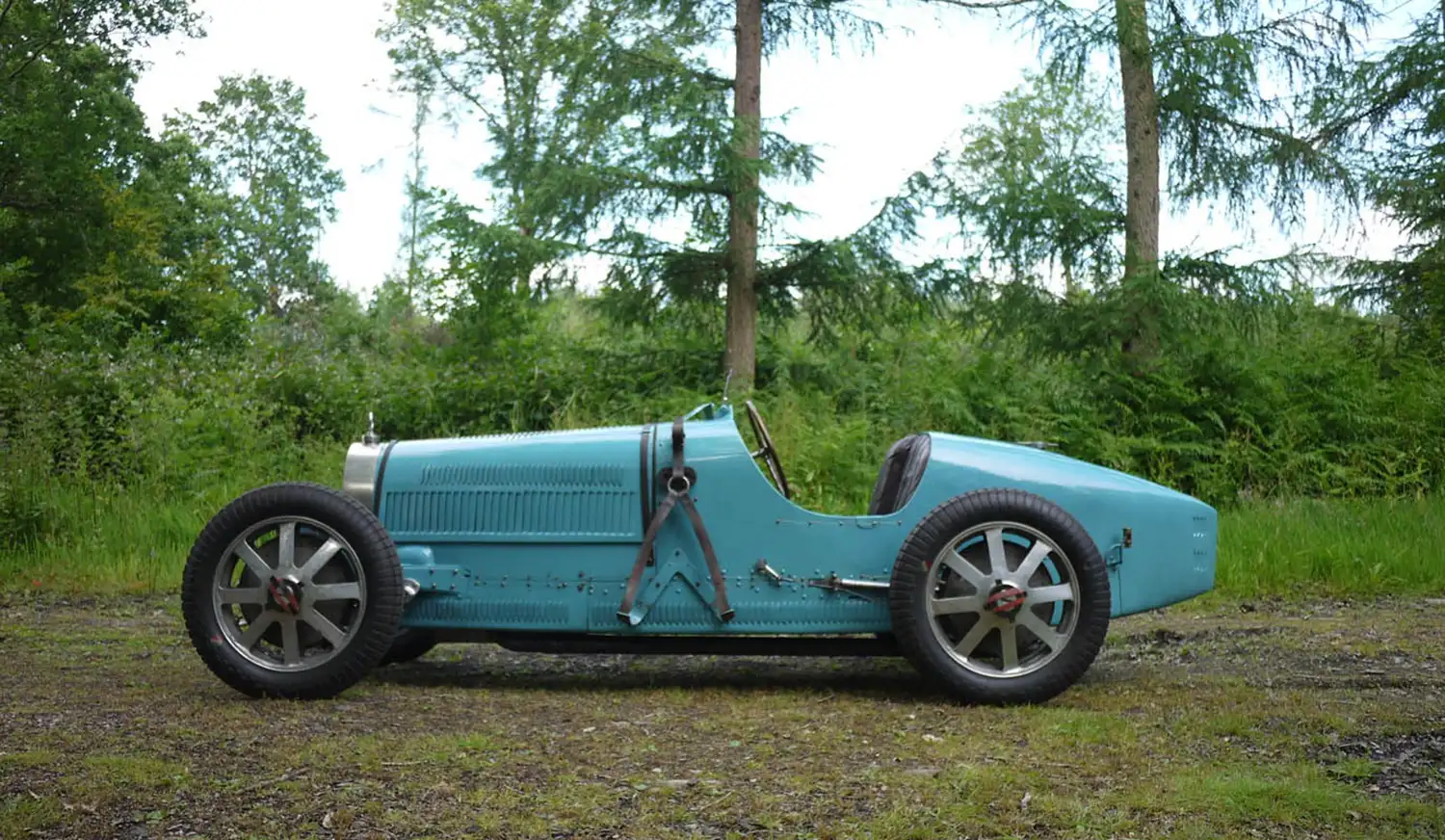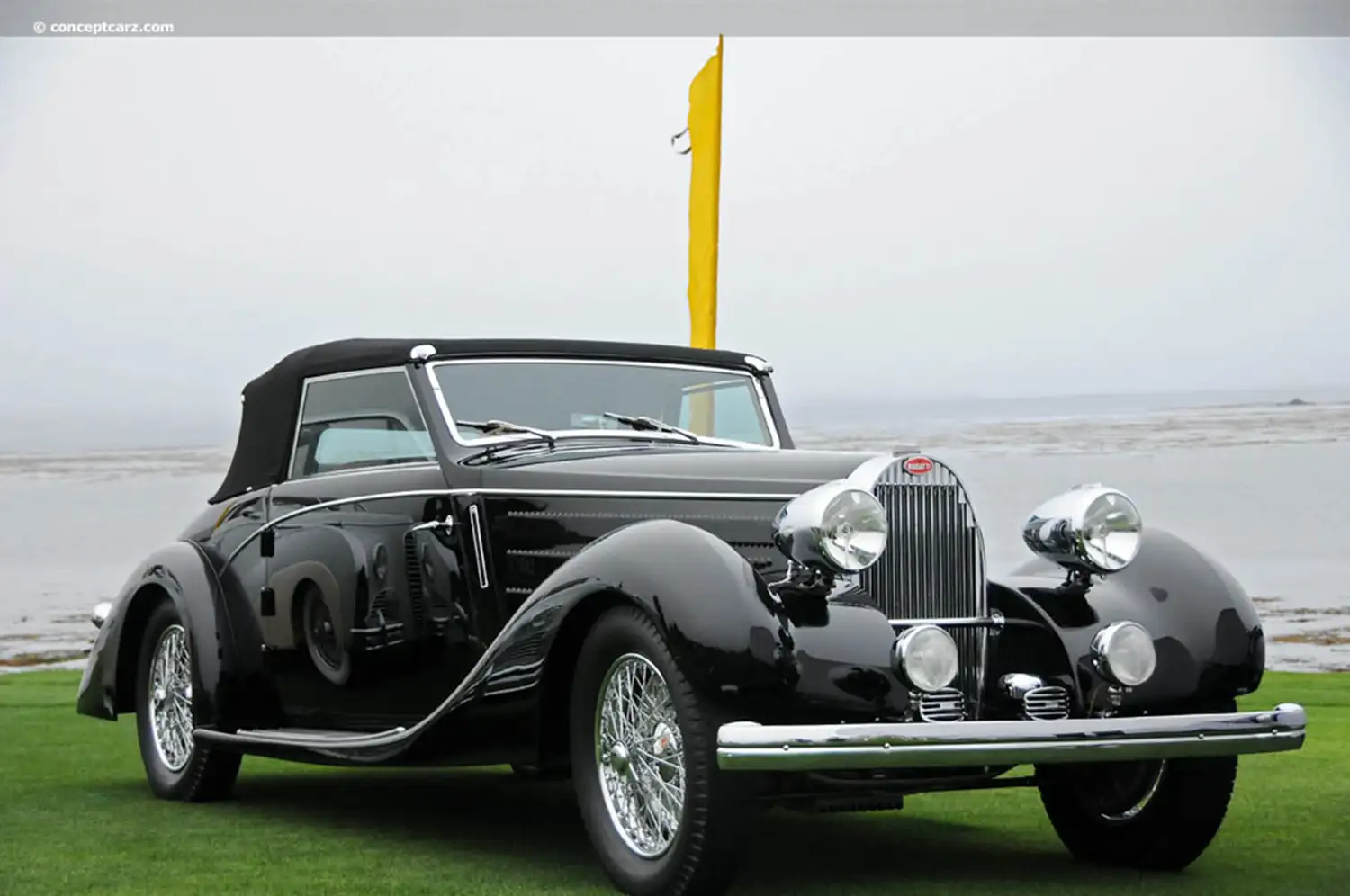
One of the world’s most successful and best-known pre-war racing cars, the Bugatti Type 35, will be marking a century since its birth at this year’s Salon Privé Concours presented by Aviva Private Clients.
The Type 35 will be the centrepiece of Salon Privé’s Bugatti – From Grand Prix to Grand Touring class, and represented by one of the marque’s pinnacle models: a blown Type 35 B – in this case, the sixth ‘B’ produced, and a highly original matching-numbers car.
Another highlight of the class – and a perfect counterpoint to the Type 35 B racer – will be an award-winning example of Bugatti’s most successful models: the Type 57. A former Pebble Beach Best-in-Show car, the four-seat Cabriolet is set to wow audiences with its elegant lines and interesting history.
There will, of course, be other stand-out entries in the class – a Type 38 Philadelphia by Figoni and a Type 55 by Gangloff have already been confirmed – making it a must-see for anyone attending the Blenheim Palace event.
1926 Bugatti Type 35 B chassis #4888
Few, if any, ‘off-the-shelf’ race-ready production cars have enjoyed as much competition success as the Bugatti Type 35, in all its forms. Originally launched at the 1924 French Grand Prix powered by a two-litre, naturally-aspirated ‘straight-eight’ engine, successive derivatives went on to win over 1,000 races in the day, including five consecutive Targa Florio victories. It also took the unofficial Grand Prix World Championship in 1926, and was driven by legendary drivers at the time, like Tazio Nuvolari and Louis Chiron.
Key to the car’s remarkable success was its lightness and durability. Superbly engineered, its inline eight-cylinder engine’s crankshaft ran in needle- and roller-bearings, giving it a ceiling of 6000rpm, and, even in basic form, an output of 75hp.
The Type 35’s chassis was similarly advanced. Its forged and hollowed front axle weighed just 10kg, and its distinctive eight-spoke cast alloy wheels, with their detachable rims and integral brake drums, helped reduce unsprung mass, and gifted the Bugatti remarkable handling prowess. Along with an all-aluminium body, tapered at the rear end, this contributed to the Type 35’s meagre dry weight of around 750kg.
Perhaps with some immodesty, Ettore Bugatti was to say of the Type 35: “(It) was the founding father of a family of pure-blooded race horses from Molsheim – a true thoroughbred.”
There was more to come, though. The Type 35 T arrived two years later, with a longer cylinder stroke upping engine displacement from 1991cc to 2262cc. Then the Type 35 C launched, with a Roots-style three-lobe supercharger boosting power of the original two-litre engine to 128hp.
But the ultimate incarnation was the most potent, too. Combining the larger 2.3-litre engine and the C’s supercharger, the Type 35 B’s power rose to 140hp, increasing its top speed to 215 km/h (133mph). And it’s this model which will be the undoubted star of Salon Privé’s Bugatti – From Grand Prix to Grand Touring class.
Originally ordered as a regular Type 35 (chassis 4797) in November 1926 by Dutch lawyer Dr. Johannes Last from The Hague, the specification was revised soon afterwards to that of a Type 35 B, with a change in chassis number to ‘4888’. Last’s car was to be the sixth ‘B’ produced, with the first five going to high-profile racers like Chiron, Eyston, Junek and Keiller (only 31 35 Bs were built thereafter, before production ceased in 1930). Uniquely, Last requested that his 35 B be delivered in full Grand Prix trim, with only the addition of lights and a stowage area behind the seats to make it suitable for road use.
Last never raced the car, and in 1931 swapped 4888 for a Type 43 A roadster. The 35 B was then sold to Frenchman Maurice Anguenot of Villers-le-Lac before returning to the Molsheim factory for a new sump and crankcase, complete with larger 37mm-high pistons. After a brief spell in Strasbourg, 4888 was sold to London Bugatti dealer Jack Lemon-Burton in 1938. Registered with its first UK number in 1941 – ‘LMF 961’, which it still wears today – the car’s first post-war owner was Louis Giron, an ex-Bugatti works mechanic. Giron competed in the car at various club events, which was to set a precedent for its future use with subsequent owners. In 1957, Kenneth Neve purchased the car and undertook a rebuild of its engine, supercharger and gearbox, at the same time removing its road equipment in preparation for more competition. The car then changed hands twice more, before moving to Belgium, where its new keeper Baron d’Huart retained ownership for the next 47 years.
Sold by Bonham in 2022, 4888 has recently undergone a complete, sympathetic restoration, with great care taken to retain its original components and bodywork.
1938 Bugatti Type 57 Cabriolet by Saoutchik
Launched in 1934, the Type 57 was one of Bugatti’s most popular models, with a total of 710 produced in a variety of guises up to 1940. Powered by an inline, eight-cylinder engine of 3257cc displacement with twin overhead camshafts and part-spherical combustion chambers, the Type 57 epitomised Bugatti’s emphasis on advanced engineering. Designed almost entirely by Jean Bugatti, Ettore’s son, the model’s steel chassis was immensely versatile and could underpin anything from a four-door saloon to a more exotic-looking four-seat cabriolet.
Which is exactly how Salon Privé’s example was specified when new. Originally ordered by Bugatti’s local agent Muller & Cluzel in Mulhouse for its client, André, the rolling chassis (#57735) was delivered in April 1939. It was then sent to renowned coachbuilder Saoutchik, based in Neuilly-sur-Seine near Paris, to be bodied as a two-door, four-seat Cabriolet. Saoutchik had already been responsible for some of the 1930’s more outlandish automobile designs, based on a variety of large-car platforms, so while the styling of ‘57735’ is quite restrained, its decidedly rakish lines and perfect proportions are sure to mesmerise audiences at Blenheim Palace.
Alas, no records exist of the car’s early life, until it surfaced in Paris in 1957, owned by Gaston Docime. It was around this time that it was spotted by US serviceman, Lieutenant Douglas Walling, who purchased the car and shipped it back to Great Falls in Montana. The next owner, Arthur Smith, had been so keen to buy the car that it’s believed he traded his Beechcraft airplane for the Bugatti. The Type 57 then passed through two further US owners before landing with Jack Becronis, who undertook a full restoration between 1983 to ’85. On completion, 57735 was entered in the 1985 Pebble Beach Concours d’Elegance and won Best in Show. With new owners Jacqueline Claire Head and Robert Lee, the car was eventually moved to Nevada, and appeared at the Meadowbrook Concours d’Elegance in 1992, and once more at the Pebble Beach Concours d’Elegance in 2012. Robert Lee kept the Type 57 until his passing in 2016, since when it has been on display at his Antique Firearms and Automobile exhibition.
Quote from Andrew Bagley, Concours Chairman, Salon Privé
“Salon Privé is delighted to showcase the Bugatti Type 35, one of the most renowned pre-war race cars, in its centenary year. With legendary drivers like Nuvolari and Chiron at the wheel, the Type 35 was a force to be reckoned with, and today original, matching numbers cars like this are rare and hugely desirable. The Type 57 Saoutchik joining it is the perfect foil for the ’35, with its graceful lines and sense of opulence. They’ll both be representing a class that’s already shaping up to be a Mecca for Bugatti afficionados.”
Entries for the 2024 Salon Privé Concours presented by Aviva Private Clients are now closed. For 2025 entries, please contact Concours coordinator Nick Wilkes on +44 (0)7795 213 361 or at NickW@salonpriveconcours.com
